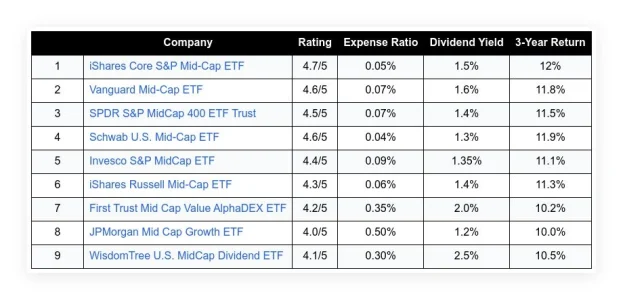The year-end rush can bring holiday cheer, but it’s also a chance to make a significant impact on your taxes before January 1st. As 2025 winds down, you have an opportunity to make smart financial decisions that can reduce your debt, boost your savings, and set you up for success in the new year.
We aren’t talking about last-minute scrambling; we are talking about intentional planning. There are dozens of practical, high-impact moves you can make to get more money back in your pocket, from optimizing your retirement contributions to smart charitable giving. By ignoring these opportunities, you could lose thousands of dollars.
Are you ready to take control of your financial future? To maximize your tax savings and step into 2026 with confidence, read our comprehensive guide to discover the key steps you need to take before December 31, 2025. It’s time to make sure you’re not leaving money on the table!
Table of Contents
ToggleOptimize Retirement and Savings
1. Max out retirement accounts you control (and prioritize match first).
Pre-tax retirement contributions can be beneficial because they reduce your taxable income today. First, however, make sure you capture your employer’s matching contribution. It’s free money you can count on to earn 100% of your investment.
Actionable steps:
- 401(k)/403(b). In 2025, employees can contribute up to $23,500 to a 401(k) or 403(b) plan, plus $7,500 catch-up for those over 50. For 403(b) participants aged 60 to 63 in 2025, an enhanced catch-up of $11,250 is available. Together, the employee and employer can contribute no more than $70,000 in 2025. Make sure you confirm and adjust your payroll election before your employer’s final payroll cutoff date.
- IRAs. You can contribute up to the 2025 limit ($7,000 if you are under 50; $8,000 if you are over 50). When your income is too high for a traditional or direct Roth IRA contribution, consider a backdoor Roth conversion strategy (convert a nondeductible IRA to a Roth right away). Don’t forget to submit your contribution by December 31.
2. Use every dollar of your HSA if you have a high-deductible plan.
The HSA is a “triple-tax-advantaged” account: contributions are tax-deductible, investments grow tax-free, and withdrawals are tax-free for qualified medical expenses. With a high-deductible health plan (HDHP), it’s an excellent long-term savings vehicle.
Actionable steps:
- Contribution limits for 2025 are $4,300 for self-only coverage and $8,550 for family coverage. An extra $1,000 catch-up contribution is available to those over 55. Before the year ends, contribute as much as possible if you’re eligible. If your plan allows payroll pre-tax deposits, set them up now.
Charitable Giving and Capital Gains
3. Plan qualified charitable moves now (DAFs and QCDs).
Whether you can lock in charitable deductions under the current rules depends on the timing of the year-end.
Actionable steps:
- Donor-Advised Funds (DAFs). Using a DAF, you could “bunch” several years’ worth of donations into 2025 if you itemize and plan to make large donations. Even if you make grants to charities later, you can take a 2025 tax deduction. To claim the deduction this year, contributions to the DAF must be made by December 31.
- Qualified Charitable Distributions (QCDs). In addition to reducing your taxable income and satisfying your Required Minimum Distribution (RMD), you can also make a QCD from your IRA directly to a charity if you are over the age of 70 ½. In 2025, the individual QCD limit is high (around $108,000). Transfers should be made directly from trustees to charities by December 31.
4. Tax-loss harvesting (but beware the wash sale rule).
Compared to realized capital gains, realized capital losses are extremely valuable. Net losses exceeding gains can offset ordinary income to the extent they exceed $3,000 per year. Remaining losses are carried forward.
Actionable steps:
- Review your taxable brokerage accounts to determine if any positions are trading below their original cost basis. By selling these “losers” before year-end, you can lower your tax liability in 2025.
- Beware the Wash Sale Rule. Within 61 days of the sale, you cannot repurchase the same or a “substantially identical” security. Consider switching to a similar, but not substantially identical, low-cost ETF, or wait the required time to keep your asset allocation.
Incotableme Timing and Distribution Planning
5. Revisit Roth conversions — partial conversions can be smart.
In a Roth conversion, funds are transferred from a traditional IRA to a Roth IRA, and the conversion is tax-free. In other words, the income tax is paid now, but all future growth and withdrawals are tax-free. It can be highly tax-efficient to convert in a year when you expect to be in a lower tax bracket — or do it in small increments.
Actionable steps:
- Estimate your taxable income in 2025. If your income will be lower this year than next, convert that amount into a lower bracket.
- If you convert a portion of your savings into a perpetually tax-free account, you will reduce your future Required Minimum Distributions (RMDs).
6. Check required minimum distributions (RMDs) and use QCDs if helpful.
You will face steep penalties if you miss an RMD once you reach retirement age, or if you inherit an IRA.
Actionable steps:
- If any remaining 2025 RMDs must be taken by December 31, confirm whether they must be taken by then. Be sure to pay close attention to the specific timing rules in your IRA notice if you are taking your first RMD.
- Whenever you plan to donate any or all of your RMD, make sure you complete a QCD so that your trustee can transfer the funds directly to the charity before the deadline.
7. Adjust withholding and estimated tax payments.
There’s no need to pay a surprise tax bill or pay a penalty for underpayment. By correcting your withholding or estimated payments, you will comply with the IRS’s requirements.
Actionable steps:
- For the last pay period of 2025, you can increase tax withholding by using Form W-4 if you anticipate owing tax.
- Be sure your fourth-quarter estimated payments for 2025 are on track if you are self-employed or have significant investment income. If you need to top up your payments, you can use the IRS’s online withholding estimator.
8. Defer or accelerate income strategically.
Income or expenses can shift at any time, affecting your marginal tax rate, available credits, or the Alternative Minimum Tax (AMT).
- Actionable steps (Income). To prepare for a higher tax rate in 2026 (e.g., because of a planned raise or business sale), you may want to accelerate bonus payments, consulting income, or self-employment receipts into 2025. Alternatively, if income is expected to be lower in 2026, consider deferring it.
- Actionable steps (Expenses). For 2025, you can itemize by prepaying state estimated taxes or significant deductible medical/dental expenses if you can pay them now.
9. Consider the tax implications of selling property or large appreciated assets.
Whether the sale closes in 2025 or not, capital gains on property or highly appreciated securities are realized on your 2025 tax return.
Actionable steps:
- If you plan to sell a property in 2025, run the numbers to see if tax-loss harvesting would offset the gains.
- You may want to consider gifting appreciated securities directly to charity (or contributing them to a DAF). As a result, you avoid paying capital gains tax on the appreciation and retain your charitable deduction at the same time.
10. Document everything and get confirmation before year-end.
For virtually all tax-sensitive transactions (DAFs, QCDs, IRA rollovers, etc.), the date the funds move or the custodian’s transfer date determines the tax year.
Actionable steps:
- Confirm your transfer with your custodians.
- Request that charities or DAFs provide 2025 receipts.
- Document transfers and confirmations of payroll changes in 2025 by taking screenshots or using PDFs.
Quick Checklist: Do These Before December 31, 2025
- Retirement. For 2025, increase/confirm your 401(k) contributions and contribute to your IRA (or do a backdoor Roth).
- Savings. If you are eligible, contribute the maximum to your HSA.
- Investing. Avoid the wash sale rule by harvesting tax losses in taxable accounts.
- Giving. Donate to a DAF or make a QCD if you want to make a tax-deductible charitable donation.
- Conversions. If you intend to convert to a Roth, confirm your tax withholding.
- Distributions. To satisfy RMDs, take the necessary actions or execute QCDs.
- Taxes Due. If necessary, adjust withholding/estimated payments.
Final Notes and When to Call a Pro
When it comes to taxes, your best move depends on your income, filing status, state tax rules, and long-term financial goals. In addition to the steps above, if you have complex assets (business interests, large estates, international income, or large planned Roth conversions), you should speak with your CPA or tax advisor before taking action.
FAQs
Can I still make IRA contributions for 2025 after December 31?
Yes. In contrast to 401(k) contributions, which must be made by December 31, IRA contributions for the 2025 tax year can be made up until the tax filing deadline (April 15, 2026, for most taxpayers). Roth conversions, however, must be completed by December 31 to be considered for that year.
What happens if I miss my required minimum distribution (RMD) deadline?
IRS penalties can be as high as 25% of the amount you should have withdrawn if you fail to take your RMD by December 31. Occasionally, you can request a waiver by filing Form 5329 with an explanation, but it’s best to plan ahead.
Are tax-loss harvesting and wash sale rules the same for crypto?
Currently, the IRS has not explicitly applied wash sale rules to cryptocurrencies, but proposals have been discussed. If you repurchase the same coin within 30 days, you can recover crypto losses. Although you should be cautious, tax law could change, and it’s best to document all of your trades.
Can I deduct charitable donations if I don’t itemize?
No. Since 2022, the special above-the-line charitable deduction has been phased out. Using donor-advised funds (DAFs) or itemizing deductions is one way to benefit from charitable giving.
Should I do a Roth conversion all at once or spread it out?
Depending on your tax bracket and future income expectations. Having a large conversion in one year could push you into a higher tax bracket, thereby increasing your tax bill. To reduce required minimum distributions (RMDs) later in life, many people spread conversions over several years.
Image Credit: Kaboompics.com; Pexels

















